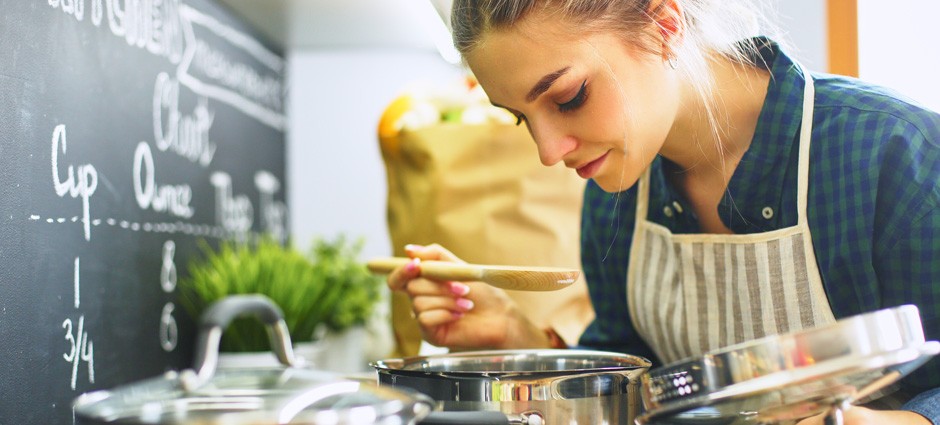Should you boil your broccoli or steam it? Sauté chicken breasts or roast them? Taste and texture are, of course, important considerations for any cooking endeavor, but health implications should get a nod, too.
Lower cooking temperatures are generally better for your health. That’s because higher temperatures alter the chemical makeup of your food, creating compounds with complicated names like heterocyclic amines (HCAs), polycyclic aromatic hydrocarbons (PAHs), advanced glycation end-products (AGEs) and acrylamide—all of which are bad for you and likely raise your cancer risk.
That’s not to say we should eat only raw food. With food such as tomatoes and carrots, lower-temperature cooking slightly alters the form of some nutrients, making them easier for your body to absorb. Follow this guide to common cooking methods to make sure you’re using each to your advantage and not your detriment.
Steaming and Slow Cooking
The gold-standard healthy cooking methods: Temperatures are low, you don’t need oils or fats, and the moisture-contact is indirect (for steaming), which helps food retain its nutrients. Steamed vegetables are a no-brainer, but steamed fish and meats can be tasty, too. For tougher cuts of meat, slow cooking or steaming for several hours (aka braising) breaks down the connective tissue and tenderizes the meat.
Boiling
Boiling keeps food temperatures low, which prevents harmful compounds from forming, but it can also leach out substantially more nutrients than steaming, especially vitamin C and B-complex vitamins, which are water-soluble. Boil carrots to boost their available beta-carotene.
Grilling
Despite its recent bad rap for the harmful chemical compounds it can create, grilling can be done safely if you stick to lower temperatures, avoid placing food directly over flames and remove it before it chars (or cut off charred parts). The American Institute for Cancer Research also recommends marinating meat in a mixture of vinegar, lemon juice, herbs and spices for at least 30 minutes before grilling to reduce HCA and PAH formation. Partially precooking meat immediately before grilling can minimize PAH formation by reducing the amount of time it’s exposed to smoke.
Stir-frying and Sautéing
The key is to choose the right oil, one that can stand higher temperatures before it oxidizes and releases harmful free radicals. Even then, this method removes more nutrients from food than does steaming, according to China-based research. When stir-frying, keep your stove temperature at medium or low and stop just when food is tender.
Roasting
Keep temperatures as low as possible and remove food as soon as it’s done to minimize formation of acrylamide and other harmful chemical compounds. Try to avoid crispy or charred foods. Instead of coating vegetables with oil, add a small amount of water or vegetable stock to the bottom of the pan to keep them moist.
Broiling
Be careful with this cooking method, which uses high temperatures at close range to quickly cook your food. Keep cooking times short to reduce charring and crisping. If you broil meat, use thin cuts, which cook faster.


